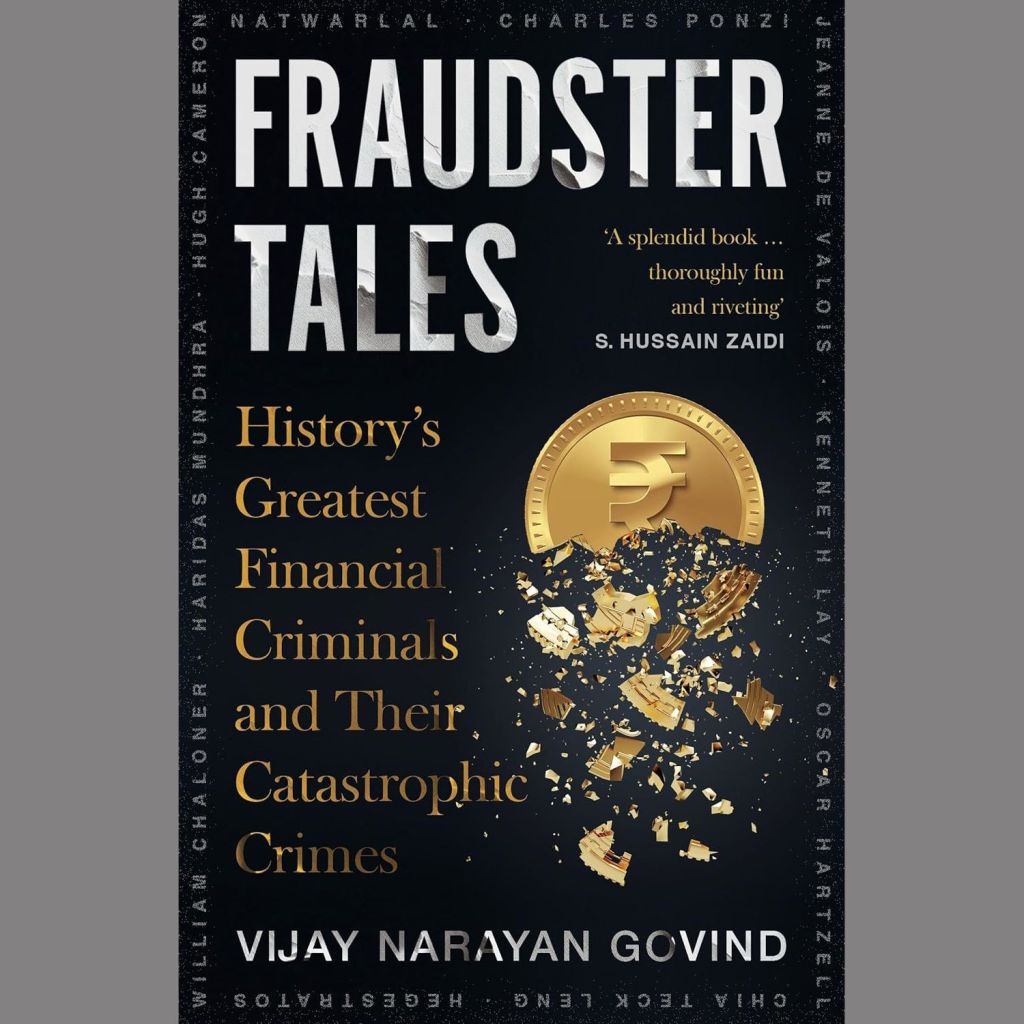‘Crime stories have fascinated audiences all over the world for centuries. But as times have evolved, the spotlight on financial wrongdoing has further intensified. In Fraudster Tales: History’s Greatest Financial Criminals and Their Catastrophic Crimes, seasoned finance professional turned true crime writer Vijay Narayan Govind presents ten remarkable cases that made the world sit up and take note,’ says the publisher’s note. ‘Skillfully weaving together history, intrigue and morality, Fraudster Tales takes us on a thrilling journey through financial deceit, where the line between right and wrong is blurred and the consequences of greed are catastrophic,’ it adds.
‘It was as late as the 1940s when Edwin Sutherland, a pioneering American criminologist kindled academic interest in the topic for the first time,’ says Govind, speaking of white-collar crime – the kind he’s written about in Fraudster Tales. ‘Later criminologists reaffirmed Sutherland’s theory – that perpetrators of white-collar crime frequently lack characteristics associated with typical street criminals, such as poverty, neglect, low self-esteem and alcohol or drug abuse,’ he says, adding that white-collar criminals often grew up in good homes, were college graduates and had traits of idealism in them. When it came to committing crime, their schemes were inventive and involved no violence, and a common tendency can often be observed among the perpetrators of such crimes to try and rationalize their acts, perhaps so as to make these acts seem acceptable in some way. ‘The ten true stories selected in this book emphasize the same exploration,’ the author says.
For those who have no actual interest in committing fraud or any other kind of financial crime (and that, we hope, means all our readers!😃), but who do find the act – the process of it, the method, the twisted mental genius – of financial crime fascinating, the ten crimes that Govind has written about in this book make for a very interesting read. The tales themselves cover a wide gamut of crimes, committed across the world over the last many centuries. For anyone who thought financial crime might be a relatively modern phenomenon, there’s the story of the Greek merchant from 300 BC, who tried to affect a plan whereby he would sabotage his own ship – sink it, to avail the dual benefits of maritime insurance and loan waivers. And that, not before he sold all his goods illegally, before actually sinking the ship that was carrying the merchandise. The man took his chances and paid the price.
Then there is the blacksmith’s apprentice in 17th century Britain who first assumes the role of a medical practitioner (without being in possession of any medical qualifications whatsoever, of course) and doles out ‘medicine’ to unsuspecting victims, and later learns to clip the silver coins that were in circulation in England at that time. Not willing to stop at this, he goes on to learn mechanized coin minting techniques and, with some help from an enterprising metal engraver, goes on to produce counterfeit money. He’s able to indulge in a lavish lifestyle for some time, though as you might guess, it doesn’t end very well for our Machiavellian counterfeiter.
Stock markets worldwide have always been rich hunting grounds for those wanting to make some quick, illicit money and – as you may rightly expect – the book contains more than one story of elaborate stock markets scams, share price manipulation, cunningly engineered and carefully executed banking frauds that involve unimaginably vast sums of money and fraudulent credit card schemes. That is in addition to tales of fraud by impersonation and manipulation of books of accounts. Some of these leave the reader stunned at the audacity of those who undertake such large risks in order to amass ill-gotten wealth, and Govind has a way of telling these stories – an engaging manner that keeps you hooked, wanting to turn the page and learn what happens next.
Of some particularly notorious gentlemen who find mention in the book, Indian readers will be quick to recognize Natwarlal – born Mithilesh Kumar Srivastava – son of a small railway station master, who went on to earn a name for himself in the world of crime. Natwarlal was into everything – forging signatures in order to withdraw money from someone else’s bank accounts, lying, cheating, faking deals, stealing from government authorities, being caught and jailed, breaking out and getting caught again but never giving up. He was a character alright, and his story is one of the most interesting fraudster tales in the book. Right alongside Natwarlal in the book is Charles Ponzi, the Italian-born conman who operated in the US and Canada in the early 20th century and is remembered to this day for his scams and illicit money-making schemes, all carefully thought out and flawlessly executed. Ponzi, too, gets a full chapter to himself in the book and that his schemes actually worked – that people bought the bulls***t he peddled all his life – still has the power to leave you amazed.
For anyone who loves to read about sensational crime – about over-the-top schemes and scams that were thought up by devious (and in a way, brilliant!) minds that only cared about money, Fraudster Tales is an excellent read. The stories move along at a brisk pace and at 248 pages, the book never overstays its welcome. Perfect reading material for a lazy Sunday afternoon.
Fraudster Tales: History’s Greatest Financial Criminals and Their Catastrophic Crimes
Author: Vijay Narayan Govind
Publisher: Pan Macmillan India
Format: Paperback / Kindle
Number of pages: 248 / 282
Price: Rs 362 / Rs 373
Available on Amazon
Book Review: Fraudster Tales









